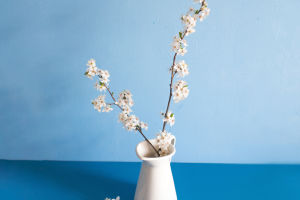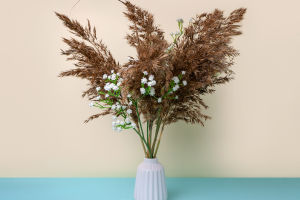Floral Zen
Hey there, Lyykers! Today, let's explore the beautiful and meditative world of Ikebana, the traditional Japanese art of flower arrangement.
The Art of Ikebana: Japanese Flower Arrangement
More than just putting flowers in a vase, Ikebana is a sophisticated practice that embodies the principles of harmony, balance, and simplicity. Ready to dive into this captivating floral art?
What is Ikebana?
Ikebana, which translates to "living flowers," dates back to the 6th century. Over time, it evolved into a distinct art form, celebrated for its unique aesthetic and philosophy. Unlike Western floral arrangements that often focus on abundance and color, Ikebana emphasizes minimalism, line, and space.
Principles of Ikebana
1. Line and Shape:
- The arrangement's structure is crucial. Ikebana often features a few key elements, each with a specific role in the composition.
- The three main lines represent heaven, earth, and humanity, creating a harmonious balance.
2. Asymmetry:
- Unlike symmetrical designs, Ikebana embraces asymmetry, reflecting the beauty found in nature's imperfections.
- This approach invites the viewer to appreciate the arrangement from multiple angles.
3. Negative Space:
- The empty spaces in an Ikebana arrangement are just as important as the flowers themselves. They allow the viewer‘s eye to rest and create a sense of tranquility.
4. Seasonality:
- Ikebana celebrates the changing seasons. Florists often choose materials that reflect the current time of year, incorporating branches, leaves, and blossoms that evoke nature’s cycles.
Basic Ikebana Techniques
If you‘re eager to try your hand at Ikebana, here are some simple techniques to get you started:
Materials Needed:
- A shallow vase or a kenzan (flower frog)
- Fresh flowers, branches, and greenery
- Sharp scissors
Steps to Create an Ikebana Arrangement:
1. Choose Your Materials:
- Select a few flowers and branches that resonate with you. Look for varied textures, colors, and shapes to create interest.
2. Prepare Your Vase:
- If using a kenzan, secure it in the vase. Fill the vase with water, ensuring it's deep enough to support the stems.
3. Create the Main Line:
- Begin with your tallest branch to represent heaven. Cut it at an angle for better water absorption and insert it into the kenzan.
4. Add Supporting Elements:
- Introduce shorter branches or flowers to represent earth and humanity. Position them at different angles to maintain balance and visual interest.
5. Incorporate Foliage:
- Add greenery around your flowers to provide contrast and fill negative spaces. Aim for a harmonious blend.
6. Step Back and Adjust:
- Take a moment to observe your arrangement. Make any adjustments to enhance balance, line, and form.
What is Ikebana? Japanese Art of Flower Arrangement
Video by Dans Le Gris
Fun Facts About Ikebana
- Ikebana Schools: There are several schools of Ikebana, each with its own unique style and philosophy. The most famous are Ikebana Ohara, Ikenobo, and Sogetsu.
- Global Influence: Ikebana has inspired floral artists worldwide, blending traditional techniques with contemporary styles to create stunning arrangements.
Ikebana is more than just an art form; it's a way to connect with nature and find peace in the present moment. So, why not gather some blooms and create your own Ikebana masterpiece? What flowers will you choose to represent your unique vision?


